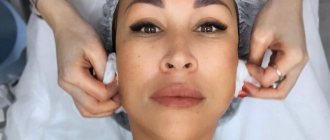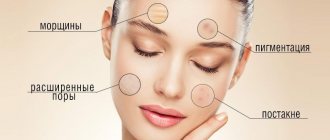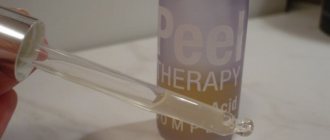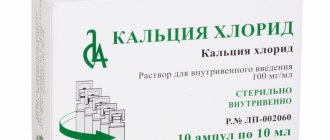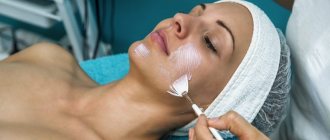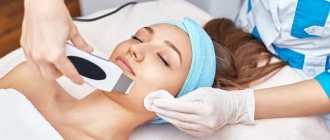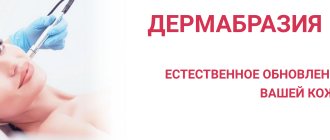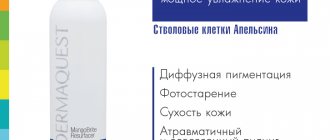The face is the calling card of every girl, so in this area you need to take special care of the skin. There it is very delicate and requires various procedures. Currently, there is a poor environmental situation, an accelerated pace of life, constant overload - all this does not have the best effect on the condition of the skin of the face, activating prematurely the aging process.
Modern cosmetology adapts to the needs of the fair sex. More and more new procedures are appearing that provide maximum effect in maintaining the beauty and health of the skin. One of them is diamond peeling.
Features of the procedure
Diamond peeling refers to facial cleansing - during the procedure, dead areas of the epidermis and impurities are removed. For this purpose, specialized equipment is used, namely, diamond-coated nozzles.
The procedure is carried out in comfortable conditions, so you will not suffer any unpleasant or painful sensations. Also, this type of peeling does not require long-term recovery. It is enough to follow a number of simple recommendations.
But, unfortunately, the procedure also has contraindications, so you must first consult with specialists.
Diamond facial cleansing is also called resurfacing, as it makes the skin perfectly smooth, removing all imperfections.
Diamond dust – small diamond crystals processed by a laser – is applied to special attachments.
Differences between microdermabrasion and dermabrasion -
Microdermabrasion and dermabrasion are cosmetological methods that are based on mechanical grinding of the skin using abrasive elements. These methods differ only in the depth of skin resurfacing. Microdermabrasion involves removing only the most superficial layer of skin, consisting of dead epidermal cells.
But with dermabrasion, the depth of resurfacing is much greater, which implies subsequent more significant changes in the skin. The dermabrasion method is more radical, requires more qualified doctor and should, as a rule, be performed only by dermatologists or plastic surgeons.
Microdermabrasion: indications
Because This procedure does not cause any noticeable damage to the skin - it is completely safe for most people. Although the face is the most common area for microdermabrasion, this method can be used on absolutely any area of the skin: neck, chest, back, and arms. The skin can become noticeably smoother even after one treatment, and it begins to better absorb moisturizers (creams, oils).
Microdermabrasion is generally recommended for people over 12 years of age and for adults under 65 years of age. Age restrictions are conditional, because People over 65 have a higher risk of bruising and skin abrasions, and people under 12 can receive treatment under the supervision of a dermatologist.
Indications are –
- photoaging of the skin as a result of exposure to sunlight,
- reducing the depth of fine wrinkles,
- age spots,
- in complex therapy of acne (acne),
- if you have superficial acne scars,
- the need to improve complexion (especially for people with yellowish skin).
For acne - dermatologists quite often use microdermabrasion for acne to help clean out deep pores and improve skin condition. Moreover, when treating acne, dermatologists usually use microdermabrasion in combination with superficial chemical peels based on glycolic or acetyl salicylic acids. This combination significantly speeds up recovery (Fig. 9-11).
For melasma - yes, microdermabrasion can be useful in the treatment of melasma and other types of hyperpigmentation (24stoma.ru). Optimal treatment in such situations would include microdermabrasion (every 2-4 weeks) combined with glycolic acid peels (once weekly). The general course of treatment is 6 weeks. In addition, the use of lightening creams (such as hydroquinone 4%) is recommended, as is the daily use of sunscreen.
Microdermabrasion: Before and After photos
Peeling effectiveness
This type of peeling is highly effective. It is used for the following purposes:
1. removal of scars left after acne treatment;
2. fight against fine wrinkles, stretch marks;
3. removal of freckles, age spots;
4. smoothing the skin surface;
5. return of the skin to its natural color;
6. cleansing clogged pores.
Diamond vacuum facial cleansing is recognized as the most comfortable cosmetic procedure, since it is not only painless, but also hypoallergenic.
Results of diamond microdebrasing
This peeling not only removes dead skin cells from its surface, but also stimulates the production of collagen by the skin, which is the key to increasing its firmness, elasticity, and tone. The relief and tone of the skin are evened out, peeling can remove or smooth out scars, scars, post-acne, and shallow wrinkles from the surface of the skin.
The color quality of the skin improves, it acquires an even tone, becomes young and radiant. Thanks to this peeling, age spots, freckles, and areas of hyperpigmentation will be eliminated from the facial skin. Enlarged pores on the face become less noticeable. The skin acquires tone, the elasticity of the skin increases, it literally looks younger.
Colady illustration
Colady illustration
Sequence of the cleaning process
The procedure is performed in several stages:
1. skin preparation;
First you need to prepare the surface of the skin for cleaning. For this purpose, it is steamed, and then a special moisturizer is applied to it to achieve maximum peeling effect.
2. performing cleaning;
When all preparatory procedures have been completed, you can proceed directly to cleaning. The surface of the skin is treated using diamond-coated attachments, and there should be several of these attachments in order to treat the entire surface of the facial skin with maximum effect. During the peeling process, the cosmetologist changes the attachments several times.
Facial cleansing unclogs skin pores, eliminates flaking and promotes rejuvenation, which is why diamond peeling has recently become increasingly popular.
3. treating the skin with nutrients.
The final stage of the procedure is applying a nourishing mask to the skin. After peeling, the skin becomes more receptive, so with the help of specialized products it is saturated with necessary microelements that activate protective mechanisms.
The total duration of the peeling procedure is about 40 minutes.
How is facial microdermabrasion performed in a beauty salon?
If you want to get a guaranteed effect after a course of treatment, you must follow the recommendations of specialists. The procedure consists of several steps.
- Preparation. At this stage, it is recommended to use specific products that help soften the outer layer of the skin and make cleaning easier.
- Cleansing. Removing makeup residues using special products that prepare for the procedure.
- Grinding with microcrystals or diamond nozzles. Depending on the type and thickness of the skin, the session lasts from 20 to 40 minutes.
- Application of skin softening and soothing agents that accelerate regeneration and relieve inflammation.
The duration and number of microdermabrasion sessions depend on the specifics of the patient’s skin, as well as on the specific defects that need to be eliminated. To eliminate minor deficiencies, 5-8 procedures are enough. In any case, you should trust only professionals, whose skill and experience will allow you to carry out the necessary grinding procedure efficiently. Residents of Moscow can find such highly qualified specialists in the city.
Read material on the topic: Ozone therapy: methods, effect, reviews, photos
Skin care after the procedure
After peeling for several days, the skin requires special care. The following recommendations should be taken into account:
1. It is necessary to regularly use moisturizing cosmetics (selected together with an experienced specialist).
2. You cannot stay in direct sunlight, strong wind or frost for a long time.
3. Sunscreen must be used.
4. For 1-1.5 weeks, visiting baths, saunas and fitness clubs is not recommended.
5. For a period of 1-1.5 weeks you need to give up decorative cosmetics and foundation.
Diamond facial peeling usually takes place without any consequences, but in some cases, redness of the skin may occur for a couple of days.
Indications for diamond peeling
- Enlarged pores on the skin.
- Pigmentation, age spots, freckles.
- Wrinkles, sagging facial skin.
- Dull, tired, lifeless skin.
- The presence of post-acne, scars, wrinkles, scars, comedones on the skin.
- Cellulite (body peeling).
- Acne, clogged pores.
- Ingrown hair on the face and body.
- Oily skin prone to acne formation and clogged pores.
- Stretch marks on the skin of the body.
- Very uneven, bumpy surface of the skin.
- Rapid aging of the skin, lack of elasticity.
Contraindications to the procedure
Despite all the convenience of this cosmetic procedure, as well as its hypoallergenicity, there are a number of contraindications to this type of peeling. These include:
1. any skin diseases (dermatitis, herpes, eczema, etc.);
2. presence of damage to the skin (abrasions, wounds, burns);
3. increased pigmentation of the skin;
4. presence of autoimmune or inflammatory diseases;
5. diabetes mellitus;
6. pregnancy and lactation.
Before undergoing a diamond peeling procedure, it is imperative to consult with a specialist.
Caution - danger
Diamond peeling is a fairly serious cosmetic procedure. Therefore, there are contraindications to its implementation:
1. Open wounds, burns (including sunburn);
2. Furunculosis;
3. Recent major cosmetic procedures (eg chemical peels);
4. Herpes, warts;
5. Fungal diseases of the skin;
6. Diabetes. In this case, consultation with a therapist is necessary;
7. Pregnancy and lactation;
8. Menstruation. The procedure becomes painful these days;
9. Allergic reaction to the components of masks and creams that are involved in the procedure;
10. Asthma;
11. Oncology (especially melanoma);
12. Epilepsy;
13. Pacemakers.
It is also not advisable to do diamond peeling for rosacea. In this case, there is a risk that the vascular mesh will increase in size and become more noticeable. Diamond facial peeling is a popular procedure. The advantages are as follows: instant effect, painlessness, accessibility, minimal risk of side effects. But the list of contraindications is quite extensive; special attention should be paid to them.
Tags: cosmetology equipment peeling
Market Analytics
- Global cosmetics market 2022: an unprecedented test for the global cosmetics industry
- Top 10 Cosmetic Research and Development of 2022
- 2020 in the beauty industry – innovation without borders
Convenient search for beauty salons on our website
Beauty salons in Moscow Beauty salons in St. Petersburg Beauty salons in Ekaterinburg Beauty salons in Novosibirsk
Latest blog posts on our website
- Naturecream / Properties of the “Sunny” oil itself
- Naturecream / “Sugar” wrinkles - or what glycation can do
- Naturecream / Esterified oils
- Naturecream / Arnica - the magical plant of alchemists
- Naturecream / Tremella Extract - Snow Mushroom Detox for Skin
- Prostye-sovety / How to visually enlarge your lips with makeup
- Naturecream / Apricot kernel oil for face
- Naturecream / MATRIXYL3000 - the best skin elasticity stimulator
- Naturecream / SPF in Natural Oils
- Naturecream / Geranium (Pelargonium) oil for skin health and beauty
Latest forum topics on our website
- Natalya / How to properly make a gelatin mask?
- Mrs._Smith / Badly sunburned! What to do?((
- Ice / Is it necessary to combine fitness classes with a diet?
- Antonova / What can be used for hair loss?
- Radio operatorKat / Who was on a protein diet?
Reviews about the procedure
Diamond facial peeling: what you need to know about the procedure [Leave a review]
Leave your feedback about this procedure (it will appear on this page after moderation)
In this form, describe only
your personal
experience of undergoing the procedure.
In order to leave a comment regarding the content of the article, use another form - in the “comments” block at the bottom of the page.
Other articles in this section
| Coral peeling Rose de Mer for the face Coral peeling is a type of mechanical exfoliation and cleansing of the skin. This method is used in cosmetology clinics and salons as an alternative to harsh chemical peels. Rose de Mer peeling occurs without skin burns, eliminates protein coagulation, but causes painful sensations of varying strength, which manifest themselves individually. With coral peeling, the upper keratinized layers of the epidermis are removed, which allows solving cosmetic problems associated with acne, pigmentation, premature aging, etc. |
| Enzyme (enzyme) peeling for the face Enzyme peeling is a superficial peeling in which the active substance is not acids, but enzymes. Enzyme peeling is a fairly gentle procedure suitable for all skin types, including sensitive skin with rosacea. |
| How to find a good cosmetologist and where is the best place to do peeling The beauty and health of your skin is in your hands, so carefully choose a cosmetologist and the place where the procedure is performed. I wish you to find a good specialist and I hope my advice will help you with this. |
| Peeling PRX One of the keys to a woman’s beauty is healthy and well-groomed skin. Many representatives of the fair sex use foundation to disguise skin irregularities. However, women often note their ineffectiveness and notice a deterioration in their skin condition. This is due to contamination of the inner layers of the epidermis with microparticles of foundation creams. You can return the dermis to its original beauty and radiance using salon procedures, for example, using PRX-t33 peeling. This article will tell you about the features of Pyrex peeling and how to use it correctly at home. |
| Laser skin resurfacing Facial skin resurfacing (dermabrasion) is a deep peeling procedure during which the epidermis and part of the dermis are completely removed. One of the progressive methods of skin resurfacing is to carry out this procedure using a laser. In this case, its radiation leads to complete evaporation and coagulation of soft tissue to the required depth. |
| Croton peeling for the face Croton peeling is a type of chemical peeling that differs from others in the content of crotonic acid in its composition, which is extracted from the seed oil of the Croton tree, which grows on the island of Sri Lanka and in China. Research has proven that the resulting oil noticeably removes not only the appearance of wrinkles, but also evens out the skin texture itself. The population of these territories has long been using this oil for rejuvenation. |
| Carbon peeling for the face Laser carbon peeling is a special cosmetic procedure during which the skin is exposed to a laser beam. There is an impact on the deep layers of the epidermis and superficial peeling of the skin at the same time. A distinctive feature of this session is the use of a special gel containing carbon dioxide particles. It helps control the depth of laser exposure and has a cleansing effect. |
| TCA peel or trichloroacetic acid peel for the face TCA peel is a type of chemical peel that affects the middle layers of the epidermis. At the same time, the skin is cleansed at sufficiently deep levels. This peeling is carried out using trichloroacetic acid (TCA), a highly toxic analogue of acetic acid that is absorbed through the skin and has a pronounced bactericidal, anti-inflammatory and cauterizing effect. |
| Complications after peeling and dermabrasion. Methods for their correction A significant number of dermatocosmetological procedures are associated with primary damage to the epidermis and dermis. Most complications that develop as a result of iatrogenic intervention are nonspecific and are formed both as a result of direct damage to the integrity of the skin and as a result of the development of an inflammatory reaction. Proper preparation of the skin and management of the rehabilitation period can significantly reduce the risk of complications. |
| Jessner peeling for the face Jessner peeling is a cosmetic procedure aimed at improving the condition and appearance of the skin using a special chemical composition. An important feature of this peeling is that, in addition to removing the stratum corneum of the epidermis to a certain depth, it promotes active regeneration of skin cells. Another name for the Jessner peel is “Hollywood”: due to the fact that it is extremely popular among movie stars. |
Where to contact
Due to the fact that diamond facial cleansing is gaining popularity, the procedure is offered by an increasing number of specialists. Some even offer in-home services, but you should not contact them.
The procedure must be carried out by experienced specialists using professional equipment.
Therefore, it is better to go to a beauty salon, where a cosmetologist will identify your problems, help solve them and give recommendations for further skin care.
Side effects
When performing diamond-vacuum peeling, you need to be prepared for side effects. They may be as follows:
• Microcracks. They appear when a specialist has chosen the wrong nozzle with high abrasiveness;
• Skin inflammation. Very rare. Masks and special serums will help;
• The appearance of age spots. Appear due to the fact that a woman after the procedure spends a long time in the sun or visits a solarium;
• Facial swelling. Goes away on its own within 1-2 days.
Almost all side effects can be avoided. To do this, you need to choose a qualified specialist and follow all his recommendations for facial care after the procedure.
Peeling: chemistry, apparatus or mechanics?
Chemical exfoliation is essentially a dosed burn of the epidermis with inevitable redness of the skin. Preparations based on active acids and alkalis eat away dead skin cells, causing the skin to renew itself.
Hardware peeling is considered the most gentle way to exfoliate “dead” skin. Ultrasound treatment of mature skin tones the skin and gives it a fresh look, but it cannot rid a woman of age wrinkles and age spots.
Diamond peeling is considered an effective method of mechanical exfoliation. The smallest abrasive particles destroy the epidermal scales of the upper stratum corneum, as a result of which the skin texture is evened out and the facial contour is tightened.
Algorithm for selecting a brightening peeling
What to look for when choosing a peel:
- Depth of pigmentation
Epidermal type - superficial and superficial-medium peels that do not affect the deep layers of the skin;
Dermal and mixed type - medium peelings - deep layers of skin.
- Peeling composition
According to the Latin American Pigmentary Disorders Academy, it is recommended: for mild pigmentation (very initial) - monotherapy (1 lightening substance);
In the case of moderate and moderately severe, chronic pigmentation - combination therapy (lightening substances from different groups, working on different links in the pigment formation chain).
Chemical peeling: types, results and possible consequences
Since dry cleansing is the most common method of skin rejuvenation, let us dwell in more detail on the features, advantages and disadvantages of this procedure. Depending on the type of drug used, chemical peels of superficial, medium and deep effect are distinguished.
- Superficial peeling is painless and safe, however, the effect of this procedure is less pronounced. When using low pH acids (glycolic, lactic, citric, tartaric, malic), skin exfoliation occurs in the stratum corneum.
- Medium peeling is a gentle exfoliation method. Exposure to high pH chemicals (20% salicylic acid, 25% trichloroacetic acid, retinoids, azelaic acid) occurs down to the basement membrane. After this procedure, skin elasticity increases, oiliness disappears, and pores narrow.
- Deep peeling using phenol and 35% trichloroacetic acid penetrates to the papillary dermis. In this case, a median peel is performed in the paraorbital (around the eyes) and oral (around the mouth) zones.
Superficial exfoliation of the skin can be done at home.
Medium peeling and phenol skin peeling procedures are carried out only by a cosmetologist. Any type of chemical exfoliation requires a rehabilitation period; with deep cleaning (it can be done only once and under anesthesia), the recovery period can last up to three months.
- The toxicity of chemicals can cause arrhythmia, heart or kidney failure, so the presence of a resuscitation team is required during the procedure.
- Chemical procedures can cause allergies, hyperpigmentation or depigmentation, as well as provoke inflammatory and infectious skin diseases.
- If the procedures are carried out incorrectly, scarring and the appearance of a demarcation line may occur.
Types of peelings for facial skin
An experienced specialist will help you determine which type of facial peel to choose. The effect of the procedure depends on the depth of exposure of the drugs. The cosmetologist will assess the condition of the skin, the specifics of existing problems and recommend the most suitable option.
Name and description of the main types of facial peeling:
- Superficial peeling. The procedure involves cleaning only the upper layers of the epidermis, without affecting the living layers. The process of superficial peeling removes dead cells. There are practically no contraindications to this procedure, it is painless and does not cause complications.
- Medium peeling. Involves cleaning the entire skin layer. During the session, drugs penetrate deeper into the epidermis, which has a beneficial effect on metabolic processes. Medium peeling is performed only by a professional cosmetologist. After such manipulations, the skin needs intensive restoration.
This type of facial peeling in cosmetology is intended for rejuvenation. It helps eliminate large areas of pigmentation, reduce deep wrinkles, and get rid of old spots. After the procedure, minor burns and red marks remain, so the recovery period can be 3–4 days.
- Deep peeling. Quite a complicated procedure. All manipulations are performed only in a hospital setting with mandatory pain relief. In the process, all layers of the epidermis are destroyed. Tissues begin to regenerate from the remaining fragments.
Deep peeling (laser and chemical) is an aggressive cleaning method. This procedure immediately rejuvenates by 8–10 years, due to the almost complete burning of old skin and its replacement with new one.
The most common anti-aging procedure is medium peeling.
In order to refresh the skin, superficial cleaning is performed at least 2 times a month. To eliminate defects and prevent early age-related changes, medium peeling is performed twice a year.
Indications for deep peeling must be very serious.
There are the following types of peelings for cleansing the skin:
- chemical;
- mechanical;
- ultrasonic;
- laser.
Let's look at each type in more detail.

